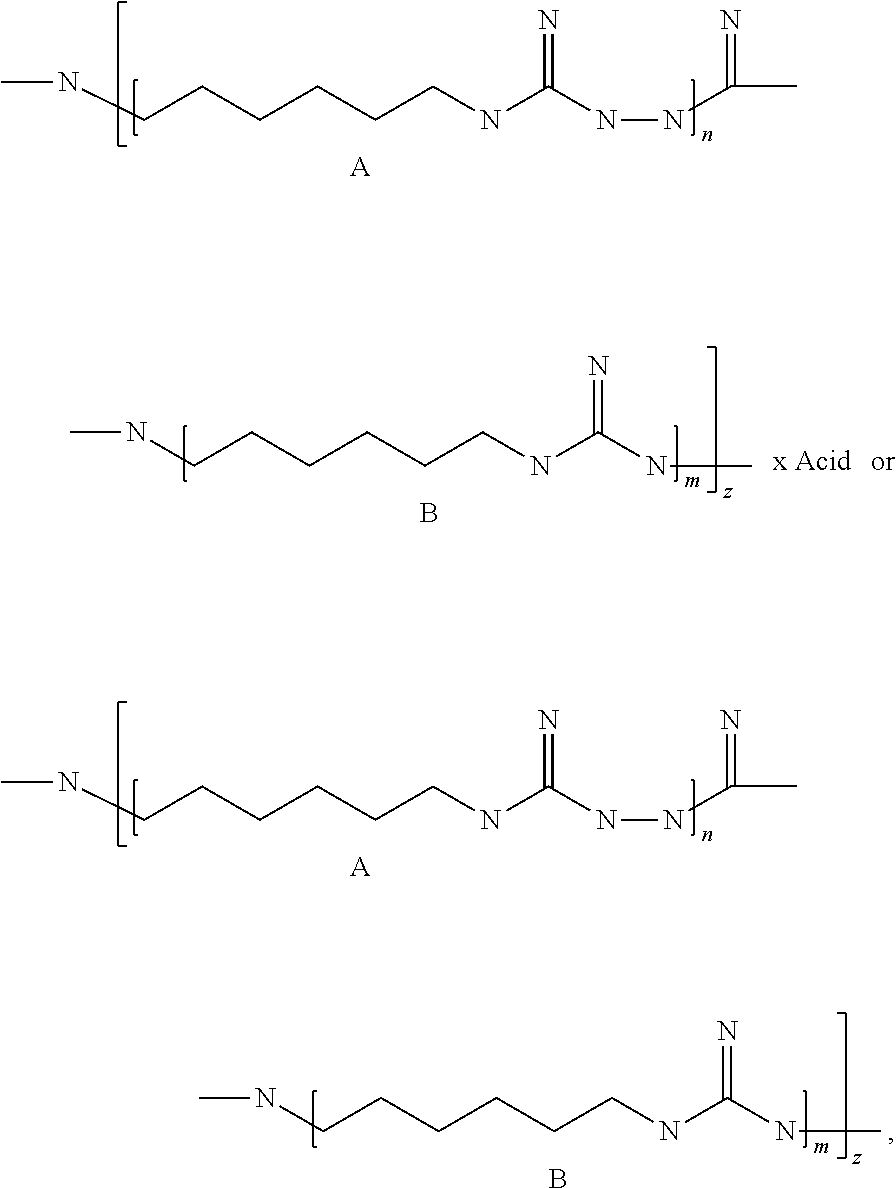Method for producing biocidal polyguanidine, and biocidal polyguanidine
a biocidal and polyguanidine technology, applied in the field of antiseptic agents, can solve the problems of not providing a sufficient degree of polymerization of input components, not allowing the acquisition of biocidal agents with high biological activity, and not treating the obtained polyguanidine with hydrazine, etc., and achieves the effect of high activity of inventive substances
- Summary
- Abstract
- Description
- Claims
- Application Information
AI Technical Summary
Benefits of technology
Problems solved by technology
Method used
Image
Examples
example 1
[0034]A 1 l flask provided with a gas outlet pipe and a thermometer was loaded with 95.5 g of guanidine hydrochloride (48.7 mass %), 95.5 g of hexamethylenediamine (48.7 mass %) and 5 g of hydrazine hydrate (2.6 mass %). The contents of the flask were stirred and placed into an air bath, while the gas outlet pipe was connected to the receiver for collecting ammonia; the reaction mixture was heated to 200° C. with gradual stripping of water and ammonia and was sustained at this temperature for 2 hours until no more ammonia was produced. Then this hot and syrupy mass was poured onto a metal tray and cooled, thus obtaining 179 g of the product as a solid, almost colorless transparent glassy substance with the following formula:
[0035]
[0036]Total number of links A and B in an average polymer chain (n+m)z=100.
example 2
[0037]The method was implemented in the same way as in example 1 using the following components, mass %:
[0038]Guanidine hydrochloride 65
[0039]Hexamethylenediamine 20
[0040]Hydrazine hydrate 15
[0041]The obtained substance has the following formula:
[0042]
[0043]Total number of links A and B in an average polymer chain (n+m)z=60.
example 3
[0044]The method was implemented in the same way as in example 1 using the following components, mass %:
[0045]Guanidine hydrochloride 40
[0046]Hexamethylenediamine 55
[0047]Hydrazine hydrate 5.5
[0048]The obtained substance has the following formula:
[0049]
[0050]Total number of links A and B in an average polymer chain (n+m)z=48.
PUM
| Property | Measurement | Unit |
|---|---|---|
| temperature | aaaaa | aaaaa |
| concentrations | aaaaa | aaaaa |
| concentrations | aaaaa | aaaaa |
Abstract
Description
Claims
Application Information
 Login to View More
Login to View More - R&D
- Intellectual Property
- Life Sciences
- Materials
- Tech Scout
- Unparalleled Data Quality
- Higher Quality Content
- 60% Fewer Hallucinations
Browse by: Latest US Patents, China's latest patents, Technical Efficacy Thesaurus, Application Domain, Technology Topic, Popular Technical Reports.
© 2025 PatSnap. All rights reserved.Legal|Privacy policy|Modern Slavery Act Transparency Statement|Sitemap|About US| Contact US: help@patsnap.com



